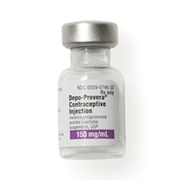Using a method of birth control with estrogen, like the
combination pill,
patch, and
ring, increases your risk of
forming a blood clot, but if you have no history of stroke, blood clots, or heart attack, and your family members have never experienced a blood clot, the risk is still quite low. If you have a history of these medical conditions, you have a higher risk of forming a new blood clot already so adding birth control with estrogen to the mix increases that risk and isn’t recommended.
Progestin-only methods like the
implant,
mini-pill,
shot, and
IUDs don’t increase your risk. If you’re worried about blood clots, we recommend talking to a health care provider about which birth control options are the safest for you.
Using a method of birth control with estrogen, like the combination pill, patch, and ring, increases your risk of forming a blood clot, but if you have no history of stroke, blood clots, or heart attack, and your family members have never experienced a blood clot, the risk is still quite low. If you have a history of these medical conditions, you have a higher risk of forming a new blood clot already so adding birth control with estrogen to the mix increases that risk and isn’t recommended.
Progestin-only methods like the implant, mini-pill, shot, and IUDs don’t increase your risk. If you’re worried about blood clots, we recommend talking to a health care provider about which birth control options are the safest for you.

